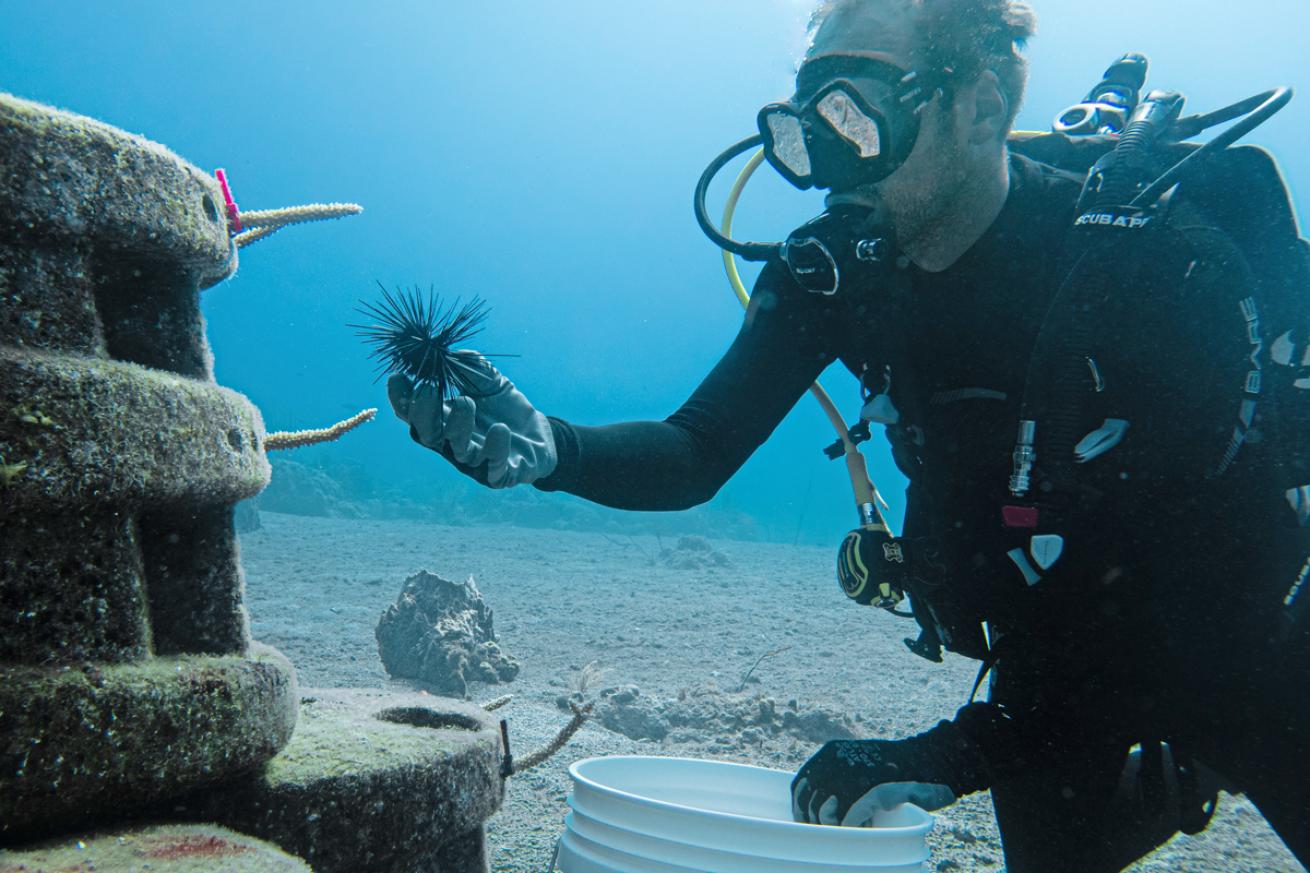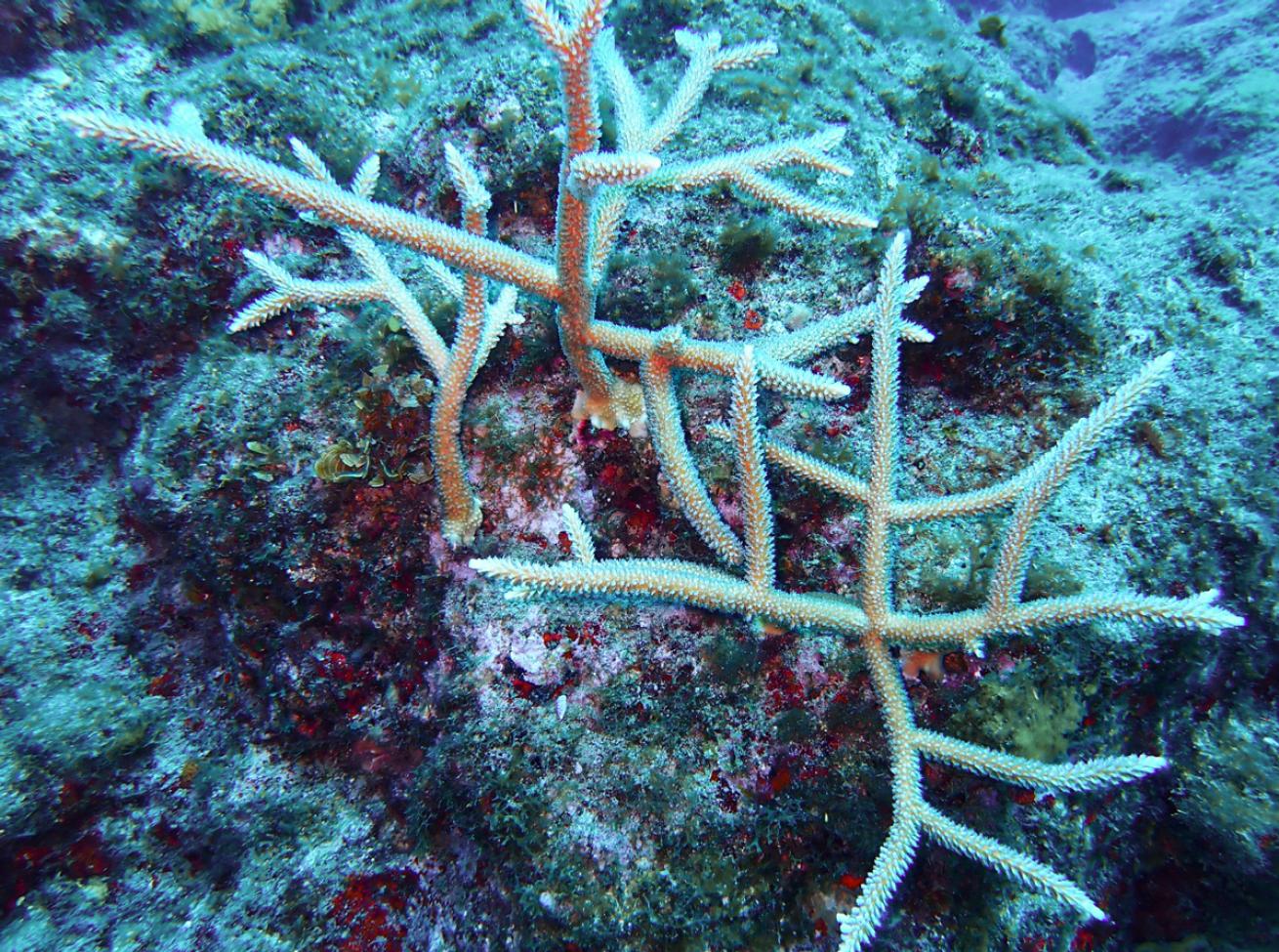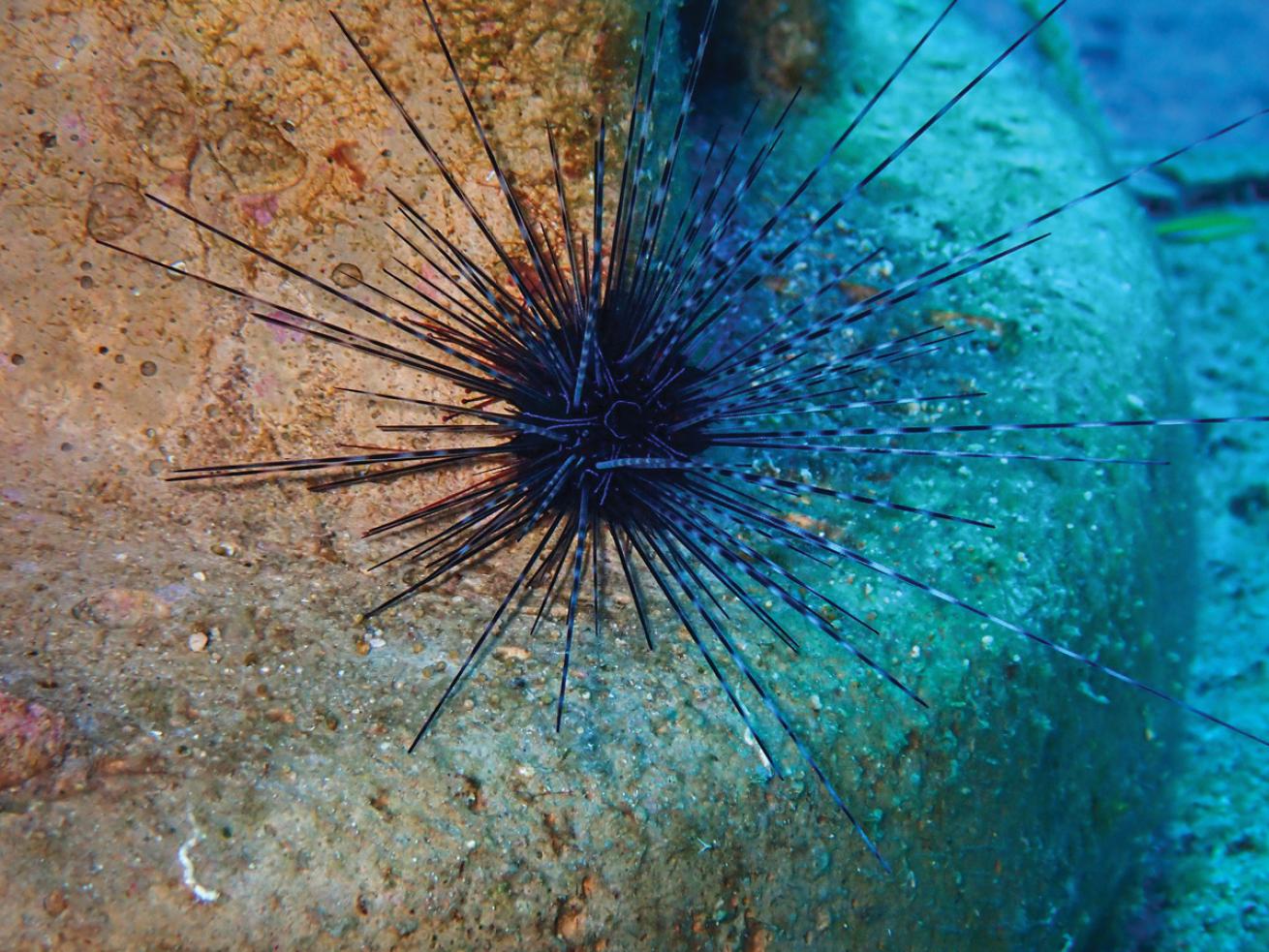Solving Ocean Conservation Woes from "K to Grey" on Saba

Mika De BreuynDivers are attempting to reintroduce long-spined sea urchins to help balance the ecosystem in the area.
Often, island nations find the most challenging aspect of marine conservation lies close to home. Locals who have lived on the land and used the sea for generations feel understandably proprietary over their home, and might be resistant to ideas of change even if posed in order to benefit the long-term health of the reef and surrounding areas. The key to successful outreach into the community lies in open communication and education.
Saba, which as an island is extremely eco-conscious (solar farms fuel the entire island’s daylight power needs), holds a month-long conservation festival called Sea & Learn to give locals an opportunity to learn what they can do for the surrounding sea. Under the program’s “K to Grey” initiative, islanders of all ages enjoy lectures from global experts, presentations and hands-on activities. The annual October festival, now in its 19th year, has had a big impact on island attitudes. Local fishermen even devised their own closed season for redfish and lobster when they felt their industry was in trouble, a rare “bottom-up” approach versus the usual government-imposed measures.
Sea & Learn partner Saba Conservation Foundation has spent the past 35 years on a mission to preserve and manage Saba’s natural and cultural heritage. One of its main duties is managing the Saba Marine Park, one of the Caribbean’s first marine reserves, which circles the entire island from the high-water mark to a depth of 200 feet and is home to 30 permanently moored dive sites.
Parks manager and managing director Kai Wulf has been busy helping coordinate myriad eco-efforts throughout the park and nearby Saba Bank. “Coral reefs throughout the world are declining very dramatically. The Caribbean stony coral tissue loss disease has been really bad for the already stressed reefs. Just a month ago we had another outbreak that affects the [long-spined]sea urchins. We are now in the midst of a program trying to reintroduce these [long-spined] urchins because they are such important grazers, which you need to clean the reefs before you can expect the coral to settle.”
The group is raising these reef-cleaning urchins from the larva stage through adulthood, setting up artificial reefs to see what is impacting them—why they settle in certain areas and don’t like others. They are studying how captive sea urchins raised in controlled environments fare in the wild and noting any difference between the two. In order to upscale this particular project, a most exciting development is in the works at a defunct power plant that will be turned into a marina-based sea lab.

Courtesy Saba Conservation FoundationAn outplanted staghorn coral on a reef in the Saba Marine Park.
“We are going to set up some mesocosms [controlled outdoor experiment labs where ambient environmental elements and conditions of the natural area can be maintained to most accurately reflect the habitat] where we collect specific corals affected by the disease outbreak and try to micro-fragment them to keep our reef’s genetic diversity within our lab. We hope when the disease subsides we can then start outplanting these corals.”
The biggest coral challenge the organization faces now is saving and relocating massive elkhorn corals over 12 feet in diameter from the prospective site of the island’s future new harbor. The large corals were discovered during an archaeological mitigation mapping exercise, which also revealed two cannons, likely dating back to 17th-century pirate activity. A relocation trial is underway, with smaller outplanted elkhorn samples from the area placed around the island to find them a happy new home. When a suitable spot is located, outside experts will be brought in to achieve the safe movement of the larger patches, which could take up to six months.

Courtesy Alwin HylkemaDivers are attempting to reintroduce long-spined sea urchins (pictured) to help balance the ecosystem in the area.
Securing cooperation and open communication isn’t always easy, but islandwide education efforts like Sea & Learn have helped ensure everyone is working on the same team. Wulf and his foundation continue to tackle large projects on this tiny but charming Caribbean island boasting world-class pinnacles and excellent diving.
“From [data found during] a recent pregnant tiger shark tagging program, I’m confident the Saba Bank is actually a breeding area and focal point in this region, where they come every year to mate and breed. We also recently participated in an expedition with a Netherlands research ship, which found the deepest sinkholes in the world. We started about 300 feet deep, and they go down to several hundreds of meters—very exciting. They are totally unexplored, so there’s a lot of adventure ahead of us.”










